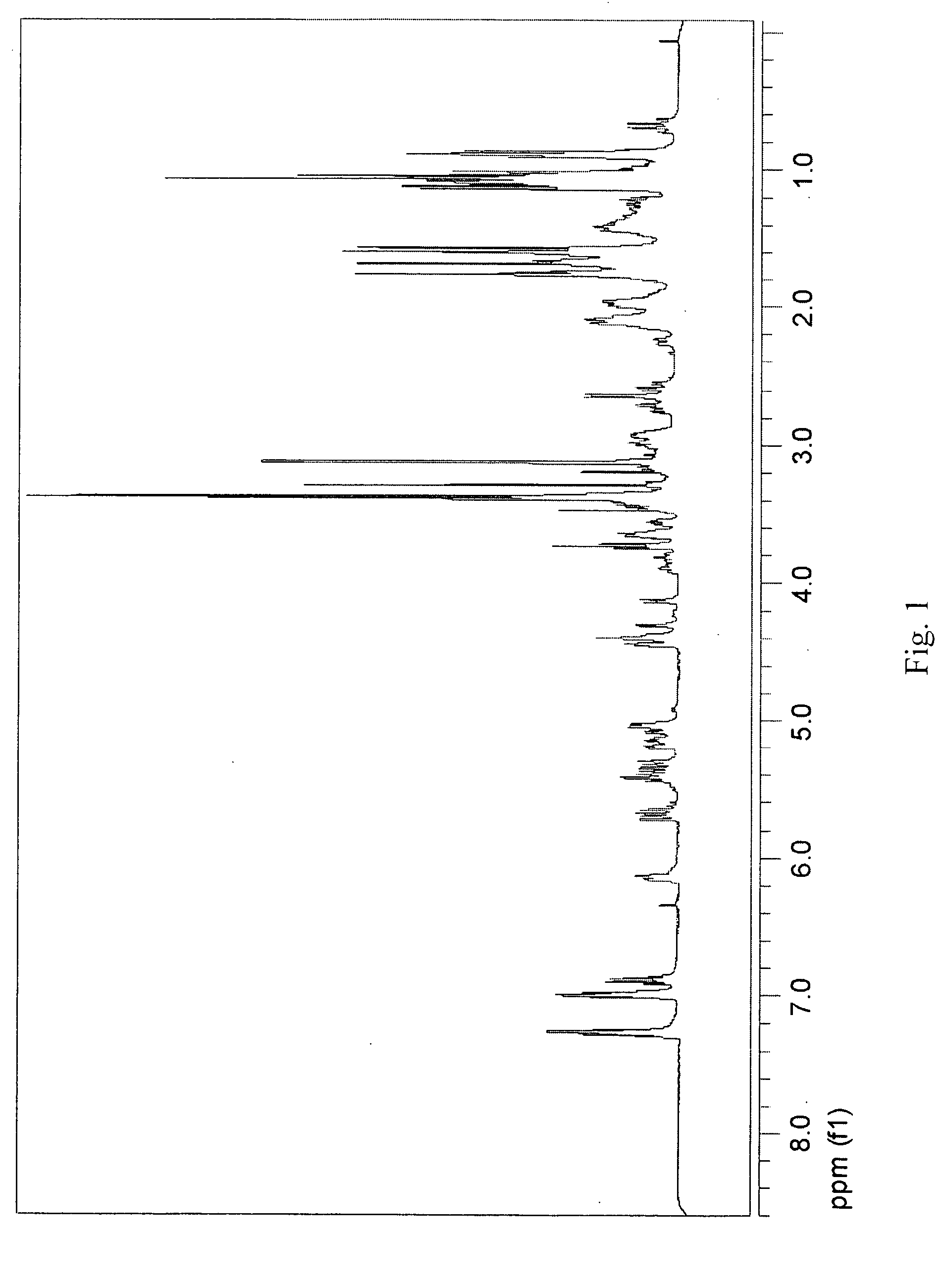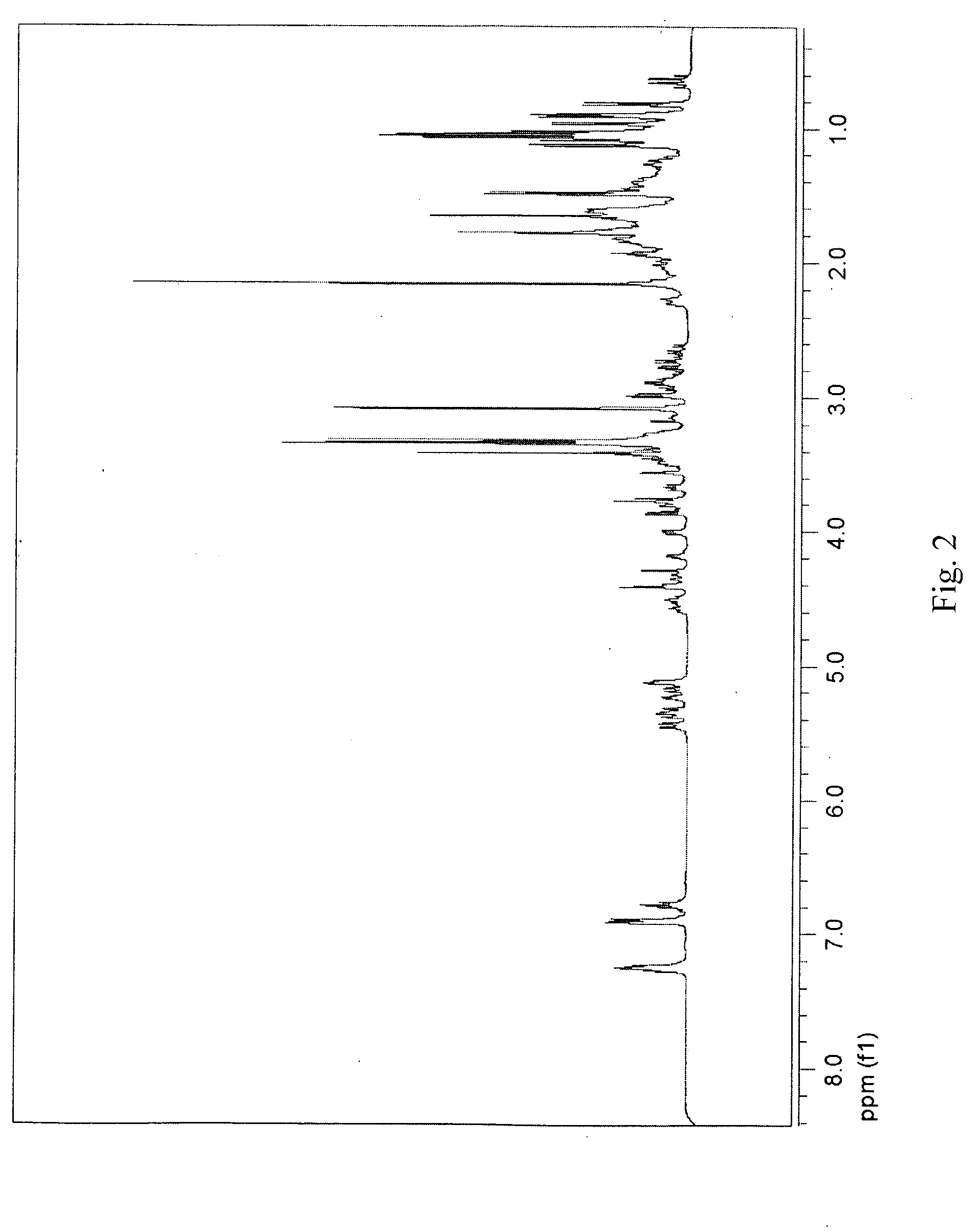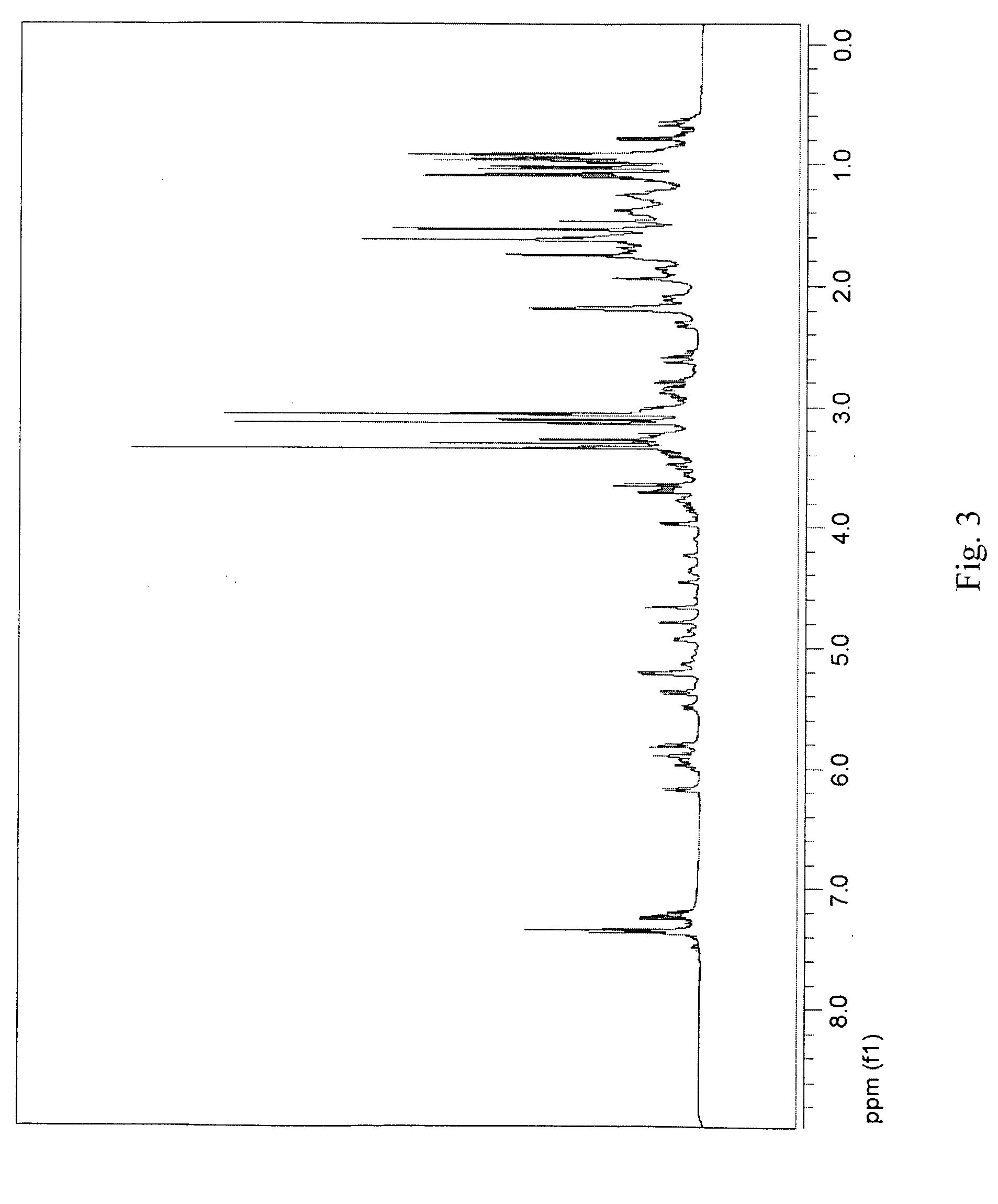Rapamycin analogues and the uses thereof in the treatment of neurological, proliferative,and inflammatory disorders
a technology of rapamycin and analogues, applied in the field of rapamycin analogues and their use in the treatment of neurological, proliferative, and inflammatory disorders, can solve the problems of limited current therapies for treating ischemic stroke, severe obstacles and setbacks in clinical development of neurotrophins, and none to prevent or retard daergic neuron degeneration
- Summary
- Abstract
- Description
- Claims
- Application Information
AI Technical Summary
Benefits of technology
Problems solved by technology
Method used
Image
Examples
example 1
[0117]
[0118] Table 1 provides the mass spectral (MS) data and FIG. 1 provides the nuclear magnetic resonance (NMR) spectrum for the compound produced by the following two alternative routes.
TABLE 1Theoretical Neutral Mass: 1020.59226Exact Mass High Resolution ResultsAdductExptl.ExactmmuppmRI %[M + H]1+1021.597801021.59954−1.74−1.70100.0[M + Na]1+1043.577401043.58148−4.08−3.9117.8[M + NH4]1+1038.623051038.62608−3.03−2.921.2[M + 2H]2+511.30109511.30341−2.32−4.531.8[M + CH3OH +1053.625961053.625750.210.201.5H]1+
[0119] A. Route 1
[0120] Rapamycin (2.5 g, 2.73 mmol) was dissolved in 200 mL p-dioxane. To this solution was added, dropwise, a solution of nitrosobenzene (1.50 g, 5 eq) in 200 mL p-dioxane. The reaction mixture as stirred at 50° C. for 64 hours, and then the products were chromatographed via reversed-phase high performance liquid chromatography (HPLC) (column: 200×50 mm YMC ODS-A, mobile phase: 80% methanol:water, ramped flow rate from 10 mL / min to 35 mL / min in 10 minutes, t...
example 2
[0122]
[0123] Table 2 provides the mass spectral (MS) data and FIG. 2 provides the nuclear magnetic resonance (NMR) spectrum for the compound produced by the following two alternative routes.
[0124] A. Route 1
[0125] The compound prepared according to Example 1 (0.29 g, 0.284 mmol) was dissolved in 7 mL methanol in an 18 mm test-tube, and a spatula tip of Pd / C catalyst (Aldrich) was added. The mixture was hydrogenated on a Parr apparatus for 15 minutes at 2.0 atmosphere H2. The products were chromatographed via reversed-phase HPLC (column: 250×20 mm YMC ODS-A with 50×20 guard, mobile phase: 80% methanol:water for 15 minutes, then to 85% in 5 minutes, then held at 85% for 20 minutes, flow=20 mL / min) to yield 0.089 g of the product (31% yield, tR=12.6 min, analytical HPLC conditions: column=YMC ODS-A S-3 120 Å, mobile phase / gradient: 95% water (+0.025% formic acid) / acetonitrile (+0.025% formic acid) to 5% water in 6 minutes, hold at 5% for 9 minutes, flow=0.30 mL / min) B. Route 2—Altern...
example 3
[0127]
[0128] Rapamycin (0.25 g, 0.274 mmol) was dissolved in 5 mL toluene with gentle heating. To this solution was added, dropwise, a solution of 2,6-dichloronitrosobenzene (0.144 g, 3 eq) in 7 mL toluene. The reaction mixture was stirred at 80° C. for 36 hours, and then the products were chromatographed via reversed-phase HPLC (column: 250×20 mm YMC ODS-A with 50×20 guard, mobile phase: 80 to 85% methanol:water in 40 minutes, flow=20 mL / min) to yield 0.046 g of the product (15% yield, tR=13.0 minutes, analytical HPLC conditions: column=YMC ODS-A S-3 120 Å, mobile phase / gradient: 95% water (+0.025% formic acid) / acetonitrile (+0.025% formic acid) to 5% water in 6 minutes, hold at 5% for 9 minutes, flow=0.30 mL / min). The MS data is provided in Table 3 and FIG. 3 provides the NMR spectrum.
TABLE 3Theoretical Neutral Mass: 1088.51431Exact Mass High Resolution ResultsAdductExptl.ExactmmuppmRI %[M + H]1+1089.521251089.52159−0.34−0.3119.1[M + Na]1+1111.500441111.50353−3.09−2.7818.1[M + N...
PUM
| Property | Measurement | Unit |
|---|---|---|
| Fraction | aaaaa | aaaaa |
| Fraction | aaaaa | aaaaa |
| Fraction | aaaaa | aaaaa |
Abstract
Description
Claims
Application Information
 Login to View More
Login to View More - R&D
- Intellectual Property
- Life Sciences
- Materials
- Tech Scout
- Unparalleled Data Quality
- Higher Quality Content
- 60% Fewer Hallucinations
Browse by: Latest US Patents, China's latest patents, Technical Efficacy Thesaurus, Application Domain, Technology Topic, Popular Technical Reports.
© 2025 PatSnap. All rights reserved.Legal|Privacy policy|Modern Slavery Act Transparency Statement|Sitemap|About US| Contact US: help@patsnap.com



